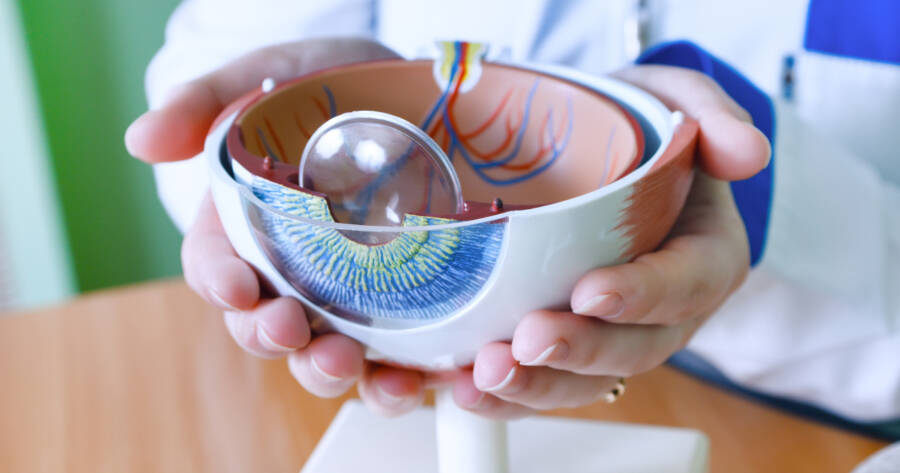Diabetic retinopathy, a significant concern for individuals with diabetes, is a condition that affects the eyes and can lead to vision loss. Fortunately, you can learn everything you need to know about diabetic retinopathy with a search online.
It occurs when high blood sugar levels cause damage to the blood vessels in the retina. Understanding the signs, causes, and treatments of diabetic retinopathy is crucial for those at risk of developing this troubling condition.
Understanding Diabetic Retinopathy
Diabetic retinopathy is a complication of diabetes that affects the eyes. It’s caused by damage to the blood vessels of the light-sensitive tissue at the back of the eye (retina). Over time, diabetes can cause the blood vessels to become blocked or to leak fluid and blood into the retina, leading to vision problems.
There are two main stages of diabetic retinopathy: non-proliferative and proliferative. Non-proliferative diabetic retinopathy (NPDR) is the early stage, where symptoms may be mild or nonexistent. Proliferative diabetic retinopathy (PDR) is more advanced and can lead to severe vision loss and even blindness.
Signs and Symptoms of Diabetic Retinopathy
The early stages of diabetic retinopathy often have no symptoms. As the condition progresses, symptoms might include blurred vision, floaters, dark areas of vision, difficulty perceiving colors, and vision loss.
It’s crucial for individuals with diabetes to have regular eye exams, as detecting diabetic retinopathy in its early stages can prevent or minimize vision loss.
Causes and Risk Factors
The primary cause of diabetic retinopathy is prolonged high blood sugar levels, which damage the tiny blood vessels in the retina.
Factors that increase the risk of developing diabetic retinopathy include the duration of diabetes, poor control of blood sugar levels, high blood pressure, high cholesterol, pregnancy, and tobacco use. Both type 1 and type 2 diabetes can lead to diabetic retinopathy.
Diagnosis of Diabetic Retinopathy
Diagnosis of diabetic retinopathy involves a comprehensive eye examination. Eye doctors use several tests, such as visual acuity testing, dilated eye exams, and fluorescein angiography, to assess the condition of the retina.
Optical coherence tomography (OCT) is another tool used to obtain detailed images of the retina, helping to evaluate its thickness and identify any swelling or leaking blood vessels.
Treatment Options
Treatment for diabetic retinopathy depends on the stage of the disease. In the early stages, managing blood sugar, blood pressure, and cholesterol levels can slow its progression.
For more advanced stages, treatments such as laser surgery, vitrectomy, and injections of corticosteroids or anti-VEGF agents into the eye can help. These treatments aim to stop or slow the leakage of blood and fluid in the eye and to shrink abnormal blood vessels.
Preventive Measures
Prevention is key in managing diabetic retinopathy. This includes tight control of blood sugar, blood pressure, and cholesterol levels. Regular eye exams are essential for early detection and treatment.
Lifestyle changes like maintaining a healthy diet, engaging in regular physical activity, and avoiding tobacco use can also significantly reduce the risk of developing diabetic retinopathy.
The Role of Technology in Managing Diabetic Retinopathy
Advancements in technology have significantly impacted the management of diabetic retinopathy. New imaging technologies allow for earlier detection and more accurate monitoring of the disease. Additionally, there are emerging treatments, including advanced laser therapies and innovative drug treatments, which offer hope for better outcomes.
The Importance of a Multidisciplinary Approach
Managing diabetic retinopathy often requires a multidisciplinary approach. This involves collaboration between primary care physicians, endocrinologists, ophthalmologists, and sometimes other specialists.
This team approach ensures comprehensive management of both diabetes and its complications, including diabetic retinopathy. Patients are encouraged to actively engage with their healthcare team, ask questions, and participate in decision-making processes regarding their treatment.
Coping Strategies and Support
Living with diabetic retinopathy can be challenging, not just physically but also emotionally. It’s important for individuals to have access to coping strategies and support systems.
Support groups, counseling, and educational resources can provide emotional support and practical advice. Engaging with communities of individuals who face similar challenges can be incredibly beneficial in managing the emotional aspects of the disease.
Find Help Today
Diabetic retinopathy is a serious complication of diabetes, but with early detection and proper management, its effects can be minimized. Regular eye examinations, good control of diabetes, and a healthy lifestyle are crucial in managing this condition. It’s important for individuals with diabetes to be aware of the risks and to take proactive steps to protect their vision.
Keep yourself informed by exploring the wealth of online resources available, and consult with healthcare professionals to stay updated on the latest advancements in treatment and management. Your vision is invaluable, and staying informed is the key to protecting it.
